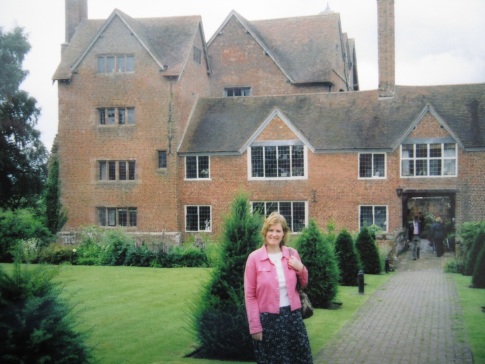
Over near Kidderminster, approximately 25 miles to the west of Baddesley Clinton, stands the splendid, red-brick structure of Harvington Hall. First constructed in the 1580's by Humphrey Pakington, this vast moated house contains the finest surviving series of priest-holes in all of England. At Harvington Hall, one may glimpse something of the true genius and skill of St. Nicholas Owen. Given the extent of the work involved, it seems a fair conjecture to say that the original designs for the central Great Staircase, and therefore the house itself, would have always contained the hiding places and the secret access points built into them. 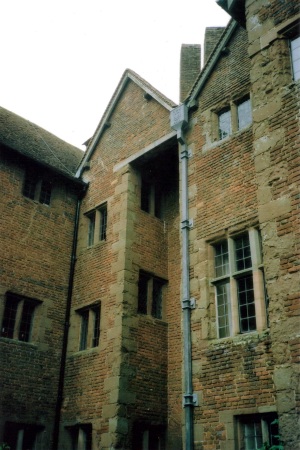
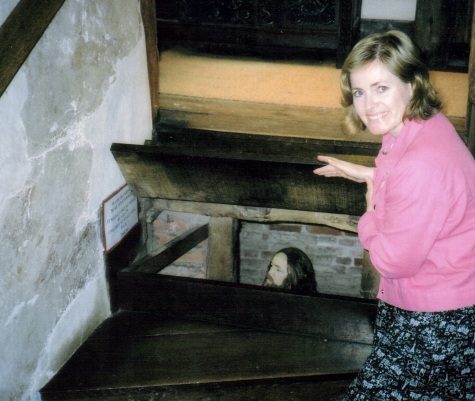
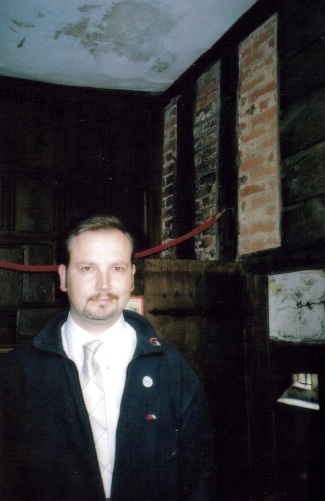
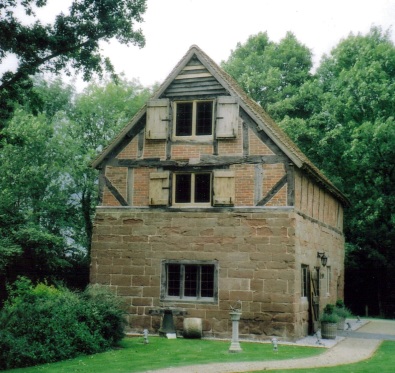
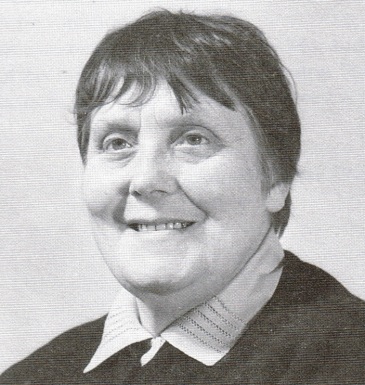
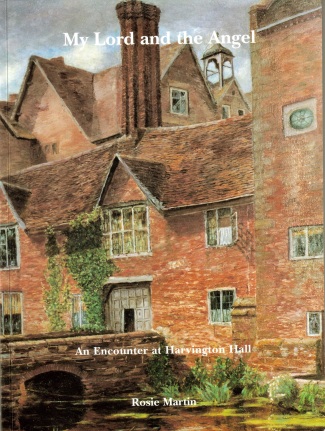

In any case, the construction of Harvington Hall provided St. Nicholas Owen with an opportunity to develop a sophisticated series of hides for priests, all centred around that Great Staircase. Although this staircase was moved to Coughton Court in 1910, during a time when Harvington had fallen into a sadly ruinous state, it was painstakingly recreated when Harvington Hall was restored to mint condition during the 20th-Century.
Today, the hall is owned and run by the Archdiocese of Birmingham. Visitors can enjoy a pleasant tea room, a decent shop and herb gardens recreated in the style of the Elizabethan era. The Latin motto in our title is taken from Isaiah 58; and graces the heraldic over-mantel in the fully-restored Great Chamber. It translates as, What was ancient and abandoned, you shall rebuild.
Here, then, is another marvellous day-trip destination for Catholics wishing to use their summer holidays to strengthen their faith, deepen their understanding and nourish their hope. And, as with Baddesley Clinton, Harvington's association with martyr-saints, makes it a place of pilgrimage and prayer. It is heartening to think that the Holy Sacrifice of the Mass was secretly offered here, right through the worst times of the Elizabethan persecution. The priests and people at Harvington helped to keep the flame of the One True Faith always burning in our island nation. Opportunities for pilgrim visitors to pray today are still enhanced by the lovely Small Chapel, painted around 1600 A.D. with red and white droplets to call to mind the Blood and Water of Christ's Passion, and by the restored Georgian-era chapel out in the grounds.
Though no-one was ever captured by pursuivant raiders at Harvington Hall - the hides obviously worked - the martyr-priest St. John Wall did live and minister here for several years and, of course, the priest-hides all bear the trademarks of the talented martyr St. Nicholas Owen. Prior to his own martyrdom in 1606, he was eventually captured by being starved out of one of his own hides over at Hindlip House. Sadly, Hindlip was demolished in 1815, but descriptions of the hides that had been incorporated there, show a striking similarity to those at Harvington.Â
Cross-section drawings of the great Harvington Hall, reveal an ingenious series of hidden passageways, leading on to secret hiding places. Each of the hides is situated around the central structure of the Grand Staircase.

Within the stairs themselves is a lift-up step, which opens onto a small, hidden room within the staircase itself. As our picture reveals, Harvington today has a wax effigy placed there, to represent a hidden priest kneeling in prayer. Further up, in a smaller stairway, two treads can be hinged upwards to reveal a small triangular hide. In his informative book How We Built Britain (2007), David Dimbleby suggests that this hiding place could have contained jewels and some money. However, we think that the historian Alice Hogge may be rather closer to the mark, in her captivating narrative history God's Secret Agents (2005), when she conjectures that the books and equipment for Holy Mass may have been stored there.
The young - and the young at heart - would likely love the ingenious false-fireplace in the Marble Room. A layer of soot would fool most observers into accepting that this was just a regular brick fireplace. However, stairs up in the false chimney lead up to a hidden passageway in a maze of attics. There are two hides in the attics; one of which had a false wall, behind which a dozen or more adults could safely hide.
So well concealed were St. Nicholas Owen's hides that one of them was only discovered by accident in the late 1890's. Some boys, playing in the then-derelict hall stumbled against an upright wall-beam in Dr. Dodd's library. This suddenly pivoted upwards to reveal a further narrow hiding place of eight feet in length, five feet in height and three feet in width; a specially constructed wooden stool, too wide to have been pushed into the narrow space, had been assembled in situ to allow some rest for a weary priest-in-hiding!

The pivoting beam is behind and to the right of the red rope in this photograph. During the days of the Elizabethan persecution, there would have been book-cupboard doors where the rope is now and book shelves would have been affixed within the raised area. There is something of that truly Catholic quality of joyful mirth in the constructions at Harvington. Although the dangers the priests and recusant families faced were extremely serious, there is definitely something tongue-in-cheek about St. Nicholas Owen's work. The hides at Harvington call to mind the witticisms and kindnesses displayed by some of the English martyrs as they were led out to the scaffold: clear signs of the presence and action of the Holy Spirit.Â
Dr. Dodd was actually the pseudonym of Fr. Hugh Tootell. He had lived at the hall and written a church history in this room during the 1700's.
Out in the grounds is the marvellous Elizabethan Malt House. The lower sandstone and upper brick/timber has been reconstructed to appear as it would have done in its heydey. The interior houses a restored 18th-Century malting kiln and now features modern educational resources.

There is also a restored Georgian-era chapel in the grounds of Harvington Hall. By that era, anti-Catholic persecution had almost died out in England, at least in its most virulent forms. Nevertheless, the chapel is camouflaged by two parallel walls, running at 10-ft in height between the chapel and the courtyard, to provide discreet access from any prying eyes in the surrounding fields.
If you are interested in knowing more about Harvington Hall, we recommend Rosie Martin's enchanting book My Lord and the Angel (1997).

As a small child, growing up in the early 1920's, Rosie wandered in to investigate the, then, largely derelict Harvington Hall. During her secret visit, she encountered the other-worldly Archbishop Edward Isley of Birmingham and his sister. As the venerable Archbishop was being addressed as ''My Lord'', Rosie initially thought that he must be God.
Her book recounts her life-long spiritual journey, including her childhood conversion and reception into the Catholic Church, in a manner which is at once down-to-earth and deeply mystical. The consistent theme at the centre of her experiences, and at the heart of her deepening understanding and spirituality, on into her old age, is always the sense of enchantment and encounter that she first received as a little girl in Harvington Hall.

Aedificabuntur in te deserta saeculorum - What was ancient and abandoned you shall rebuild.
It is a great motto for those working to preserve and hand on the True Faith in our own difficult times. The resurrection of Harvington from ruinous collapse can remind us of several important themes: Christ's own Glorious Resurrection; the restoration offered to each of us by Christ in the Sacraments; the unexpected re-flourishing of Catholicism in England, from the 1800's-1950's, when immigration, emancipation, the restoration of the hierarchy and an influx of thousands of converts, built upon the sure foundations which the heroic martyrs and recusant families had maintained; and finally, the Christian hope that we must cultivate for the glorious future return of the One True Faith.Â
What wonderful lessons can be learned from a visit to Harvington Hall; and from the personalities connected with her deepest mysteries!



